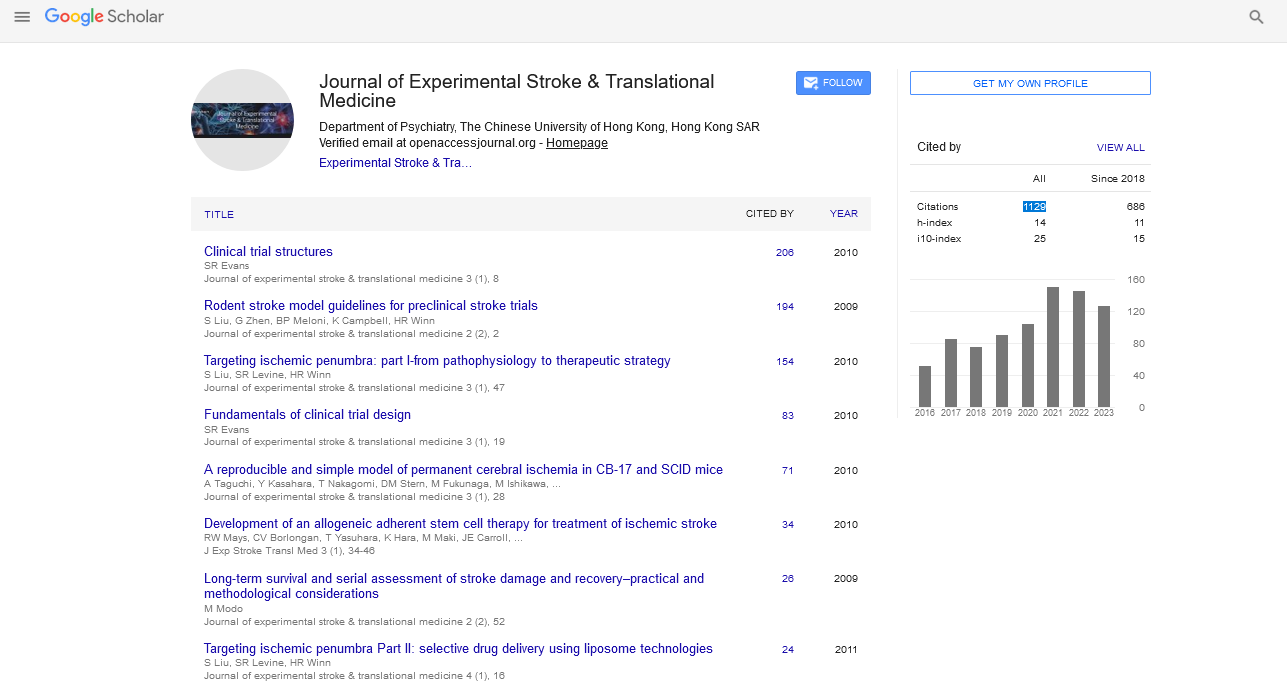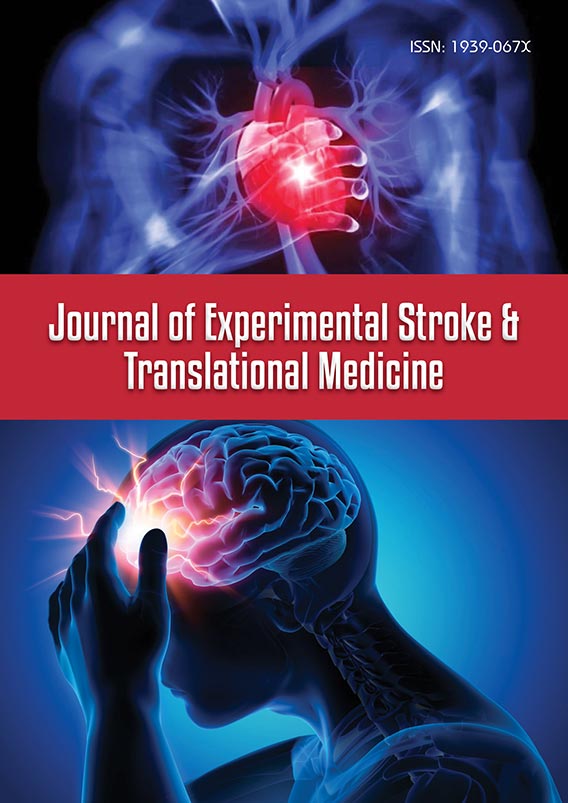Perspective - Journal of Experimental Stroke & Translational Medicine (2024) Volume 16, Issue 6
Ischemic Penumbra: A Critical Window for Stroke Intervention
- Corresponding Author:
- Behzad Rahmati
Department of Medicinal Science, University of Peradeniya, Galaha, Srilanka
E-mail: behzad.afra@yaho.com
Received: 04-Nov-2024, Manuscript No. jestm-24-153513; Editor assigned: 7-Nov-2024, PreQC No. jestm-24-153513 (PQ); Reviewed: 21-Nov-2024, QC No. jestm-24-153513; Revised: 03-Dec-2024, Manuscript No. jestm-24-153513 (R); Published: 31-Dec-2024, DOI: 10.37532/jestm.2024.16(6).289-290
Introduction
The brain is a highly sensitive organ, requiring a continuous supply of oxygen and nutrients for proper function. Any interruption in blood flow can result in ischemic stroke, a condition that affects millions worldwide and remains a leading cause of disability and death. In the event of a stroke, the fate of brain tissue depends on a delicate balance between irreversible damage and salvageable tissue a concept encapsulated in the term ischemic penumbra. Understanding this phenomenon is critical for timely and effective stroke management.
Description
Defining ischemic penumbra
The ischemic penumbra refers to the area of brain tissue surrounding the core infarct, where blood flow is significantly reduced but still sufficient to prevent immediate cell death. This region is functionally impaired yet metabolically active, meaning the neurons are not dead but are at risk of dying if blood flow is not restored in a timely manner.
Core vs. penumbra
To fully grasp the significance of the ischemic penumbra, it is essential to differentiate it from the infarct core:
Infarct core: This is the region with critically low blood flow, typically below 10-15% of normal levels. Neuronal death in this area is rapid and irreversible due to energy failure and subsequent cell death.
Ischemic penumbra: Blood flow in the penumbra ranges between 20-40% of normal levels. Neurons in this area are electrically silent due to insufficient energy but can potentially recover if reperfusion is achieved.
Pathophysiology of the ischemic penumbra
The ischemic penumbra represents a state of dynamic balance between neuronal survival and death. Several key pathophysiological mechanisms influence the viability of this region:
Energy failure and ionic imbalance: In the ischemic penumbra, reduced blood flow limits the availability of oxygen and glucose, compromising the production of Adenosine Triphosphate (ATP). This energy deficit disrupts ion gradients across neuronal membranes, leading to depolarization and the release of excitatory neurotransmitters such as glutamate.
Excitotoxicity: Glutamate plays a central role in the excitotoxic cascade, where excessive activation of NMDA and AMPA receptors leads to an influx of calcium ions (Ca2+) Elevated intracellular calcium triggers a series of destructive processes, including mitochondrial dysfunction, activation of proteases and generation of Reactive Oxygen Species (ROS).
Oxidative stress: The ischemic penumbra is highly susceptible to oxidative stress due to impaired antioxidant defenses and increased production of ROS. Oxidative damage to lipids, proteins and DNA contributes to cellular injury and apoptosis.
Imaging the ischemic penumbra
Accurate identification of the ischemic penumbra is crucial for guiding therapeutic decisions in stroke management. Advanced imaging techniques have revolutionized our ability to visualize and quantify the penumbra:
Computed Tomography Perfusion (CTP): CTP measures Cerebral Blood Flow (CBF), Cerebral Blood Volume (CBV) and Mean Transit Time (MTT). The infarct core is typically characterized by reduced CBF and CBV, while the penumbra shows prolonged MTT with relatively preserved CBV.
Magnetic Resonance Imaging (MRI): MRI techniques, such as Diffusion-Weighted Imaging (DWI) and Perfusion-Weighted Imaging (PWI), provide detailed information about the ischemic core and penumbra. The DWI-PWI mismatch is a common method for estimating the penumbra, where DWI identifies the infarct core and PWI highlights hypoperfused tissue.
Positron Emission Tomography (PET): PET is considered the gold standard for assessing metabolic activity and oxygen consumption in the brain. It can distinguish between viable and non-viable tissue within the penumbra, providing valuable insights into tissue fate.
Therapeutic implications
The ischemic penumbra represents a critical window of opportunity for therapeutic intervention. The primary goal of acute stroke treatment is to restore blood flow and salvage the penumbra before irreversible damage occurs.
Thrombolysis: Intravenous thrombolysis with Tissue Plasminogen Activator (tPA) is a standard treatment for ischemic stroke. Administered within a narrow time window (typically 4.5 hours from symptom onset), tPA dissolves the occluding clot and restores perfusion to the penumbra.
Mechanical thrombectomy: Mechanical thrombectomy is a minimally invasive procedure used to physically remove large clots from cerebral arteries. It is particularly effective in patients with large vessel occlusion and can be performed up to 24 hours after symptom onset in selected cases with favorable imaging profiles.
Hypothermia: Therapeutic hypothermia involves cooling the brain to reduce metabolic demand, limit excitotoxicity and inhibit inflammatory pathways. While promising, its clinical application in stroke remains under investigation.
Prognostic significance
The extent of the ischemic penumbra is a strong predictor of stroke outcome. Larger penumbra volumes are associated with better functional recovery if reperfusion is achieved. Conversely, failure to restore blood flow leads to expansion of the infarct core and worse clinical outcomes.
Conclusion
The ischemic penumbra is a dynamic and salvageable region of brain tissue that holds the key to improving outcomes in ischemic stroke. Timely identification and reperfusion of the penumbra can significantly enhance neurological recovery and reduce disability. Continued research and innovation are essential to unlock the full potential of penumbral therapy and improve the lives of stroke patients worldwide.

